Learn how to measure cake pans' sizes and how exactly to determine the dimensions and volumes of your baking pans. Once you know what pans you have, consult the list of recommended baking pans and bakeware to verify you have the pans you need to tackle any recipe! Plus find out how to convert recipes from one baking pan size to another.
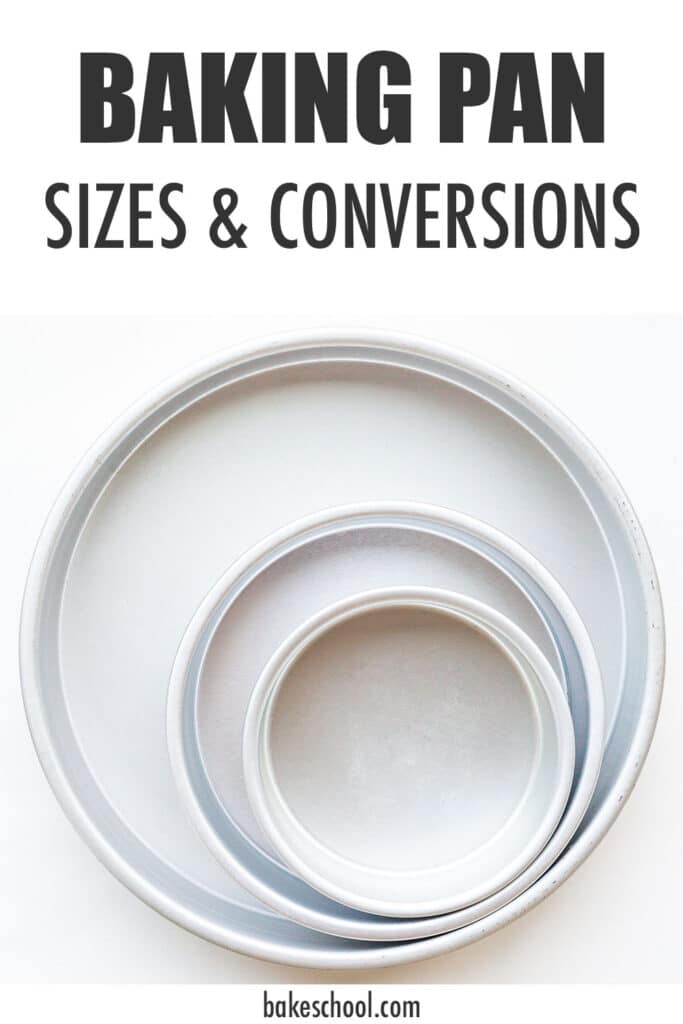
Jump to:
Get familiar with the units of measure and their abbreviations
Some recipe writers will spell out the units of measure in their recipe, as inches and centimetres, for example, while others may abbreviate them to in and cm. Here's a rundown of the commonly used abbreviations for the units of measure used for baking pans.
Units of lengths
Europeans follow the metric system, where lengths and distances are expressed according to the metre, whereas North Americans tend to measure distances according to inches and feet:
- inches are abbreviated as in or as "
- centimetres are abbreviated as cm
- millimetres are abbreviated as mm
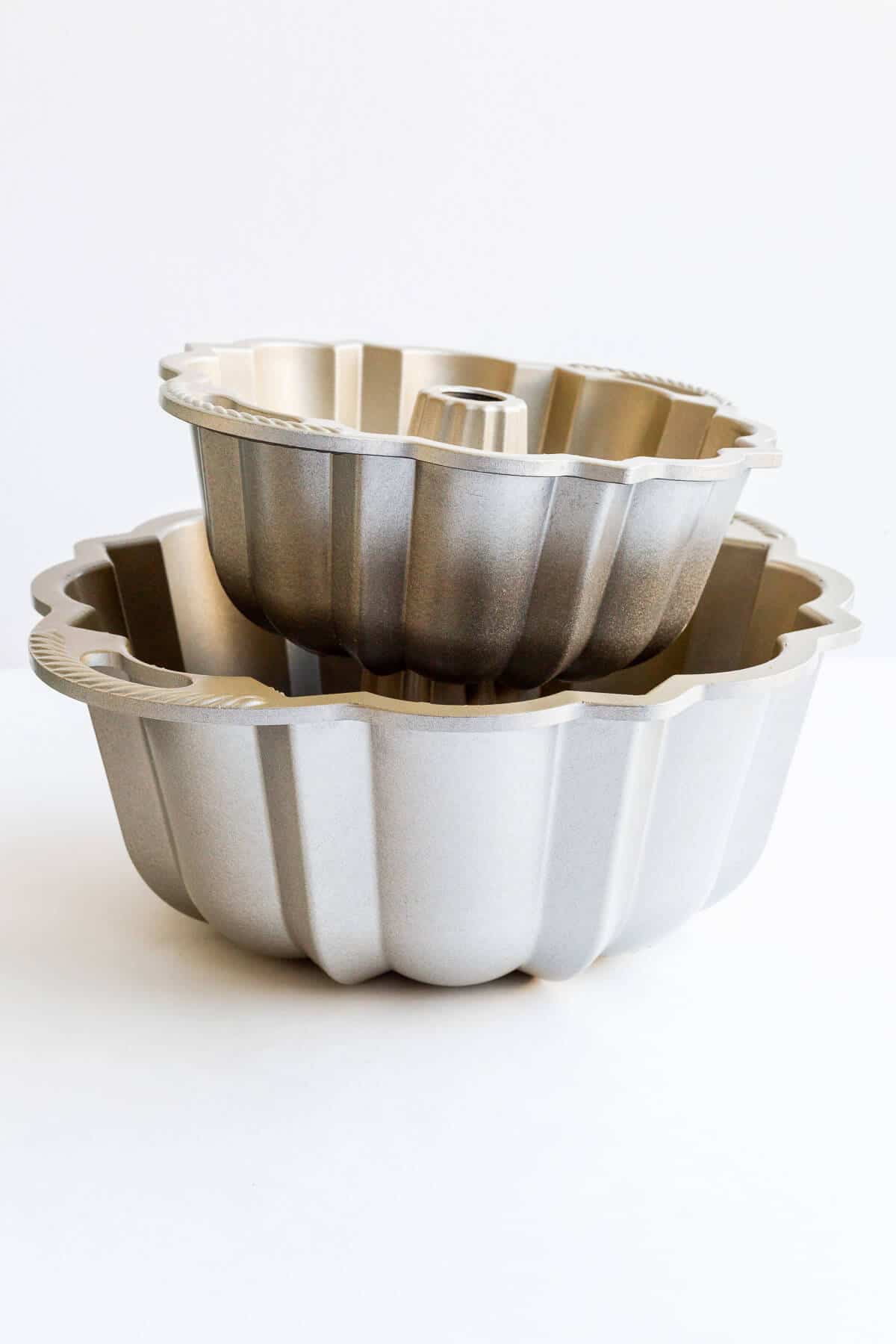
Conversions from centimetres to inches
You may need to convert from inches to centimetres, or centimetres to inches when you are choosing the appropriate bakeware for a recipe. Europeans use the metric system and measure bakeware in centimetres, while North Americans use inches.
The conversion from centimetres to inches is easy: there are 2.54 centimetres per inch. If you have a measurement in inches, multiply it by 2.54 to get the measurement in centimetres. Or to convert centimetres to inches, divide the centimetres by 2.54 to get the measurement in inches.
You can also use this list of common (rounded) conversions, which will be especially useful for bakeware dimensions:
- 4 in = 10 cm
- 5 in = 13 cm
- 6 in = 15 cm
- 7 in = 18 cm
- 8 in = 20 cm
- 9 in = 23 cm
- 10 in = 25 cm
- 11 in = 28 cm
- 12 in = 31 cm
- 13 in = 33 cm
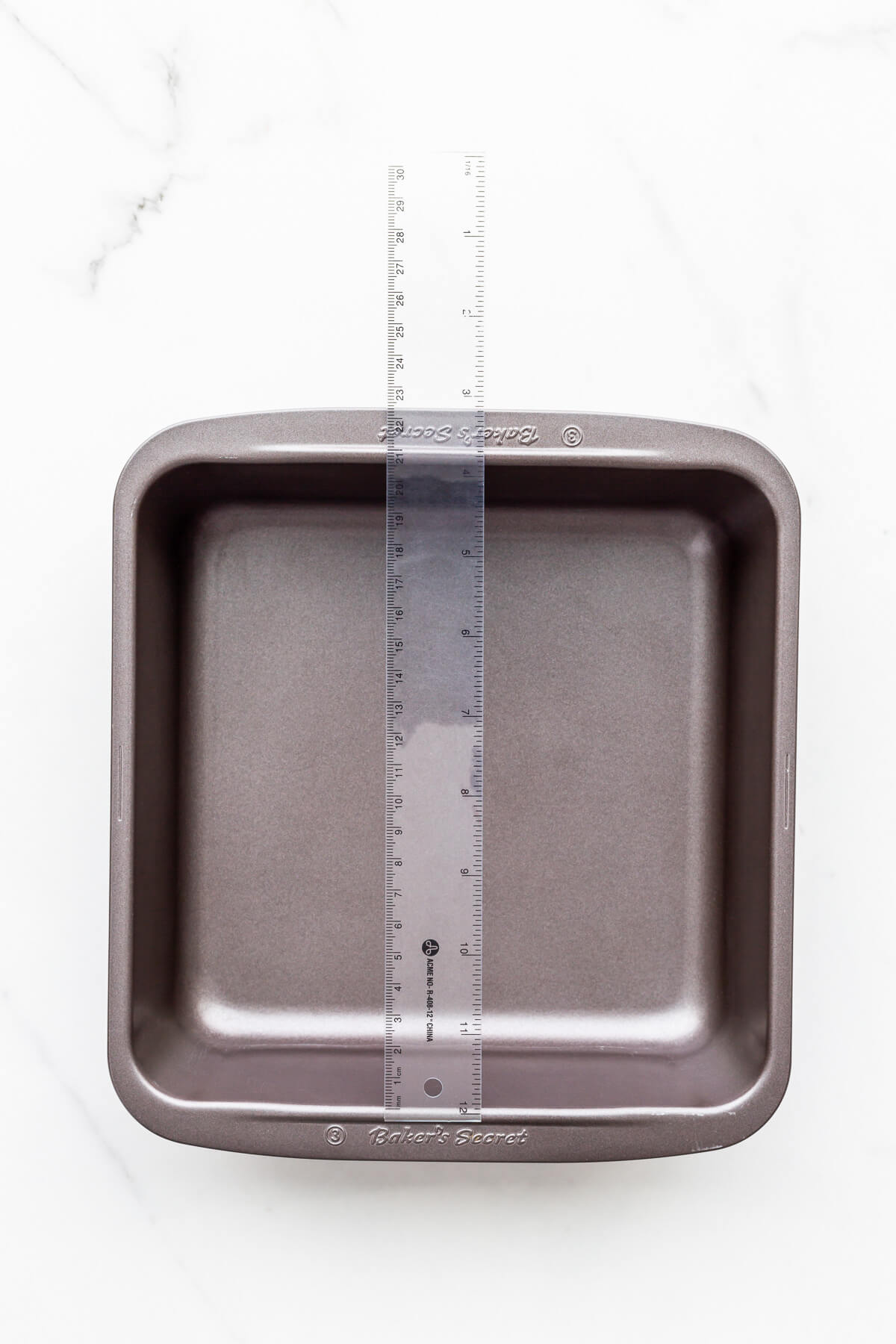
How to measure the pan size
Method to measure dimensions of cake pans and bakeware
As bakers, you should always have some kind of clear plastic or metal ruler, and even a measuring tape in your toolkit (or kitchen drawers). Both of these should show measurements in centimetres and inches to make converting between metric and imperial pan sizes easier.
In most cases, you should measure the dimensions of a cake pan at the top of the pan (at the opening), from the inner edge to the inner edge, straight across. But some manufacturers may opt to give the dimensions of the bottom of the pan.
Use a ruler or measuring tape to measure the dimensions of your pans.
- For square and rectangular cake pans, the vertical and horizontal lengths are measured from corner to corner, as opposed to a television or computer screen, where the dimensions represent the diagonal across the screen from corner to corner
- For loaf pans, the length, width, and height of the pan are measured from inner edge to inner edge (though some brands measure the outside dimensions of the pan so this is brand dependent).
- For round cake pans, the diameter is measured straight across the top of the pan—note that round pan sizes are expressed as the diameter, and not the radius)
- For bundt pans and tube pans usually, the size is expressed as a volume, but if you want to measure the dimensions, measure the diameter straight across the top opening of the pan. Most bundt pans have 10- to 14-inch diameters
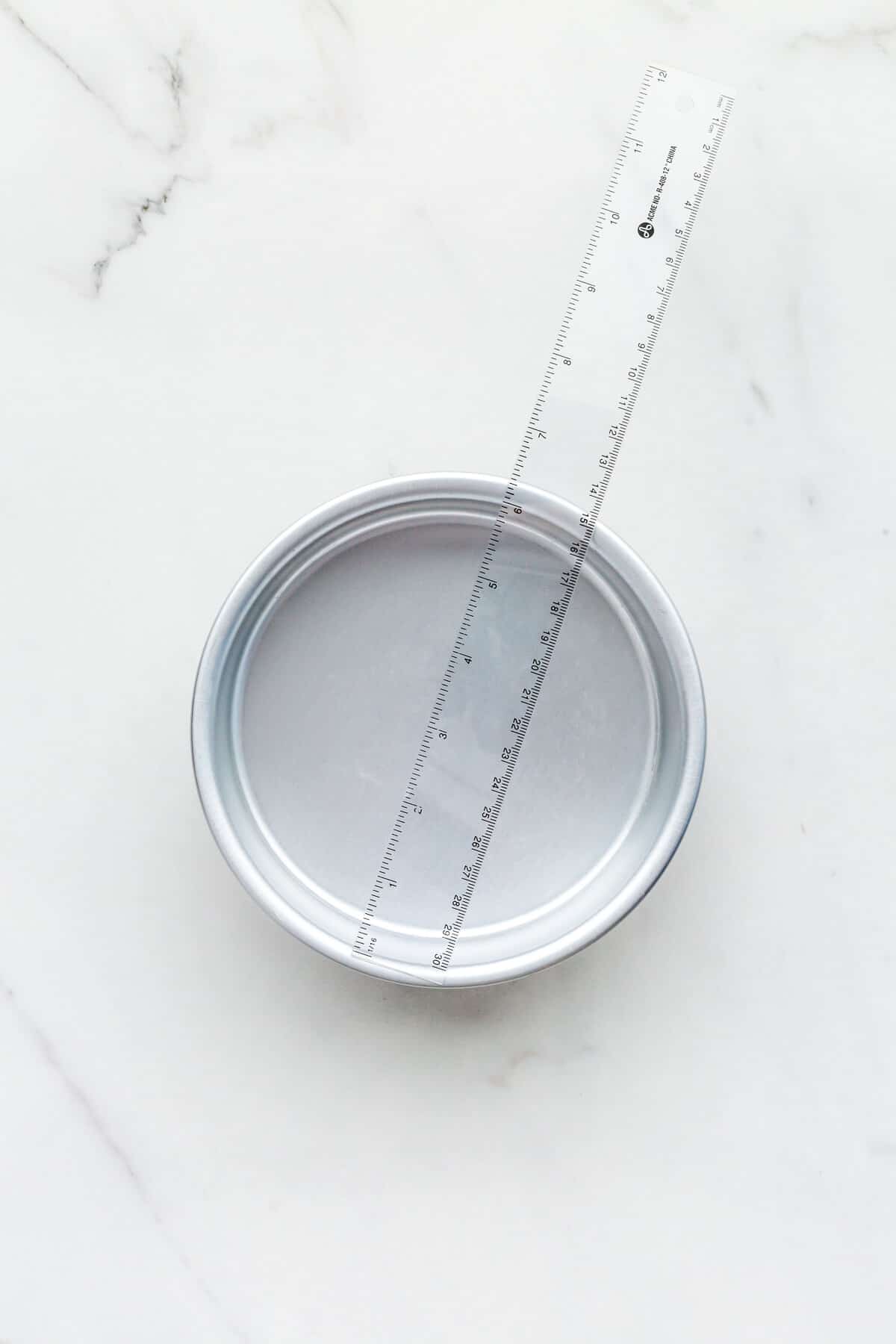
Easy way to calculate the volume of your baking pans
There can be a lot of math involved when you want to calculate the volume of your baking pans. To make matters worse, some of the math is not so obvious when you realize that, for some types of cake pans, the sides of pans aren't vertical, but rather angled, meaning your round cake pan is actually a truncated cone, which comes with a different formula for calculating volume than the volume of a cylinder.
For this reason, I recommend letting go of your calculator and using a different method. You can also invest in this recipe scaling calculator workbook which is a set of spreadsheet that does the math for you, calculating pan volumes among other things.
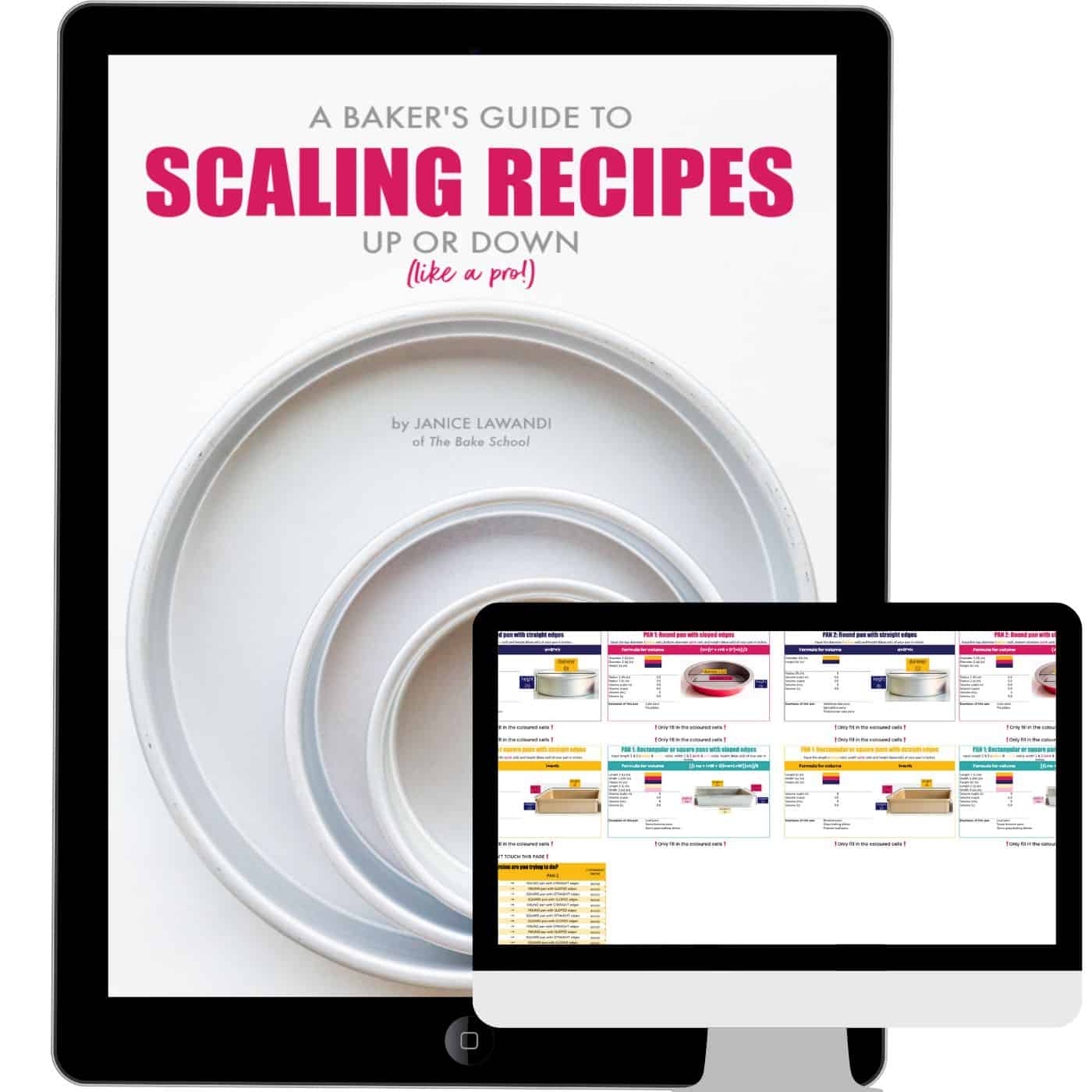
Scale Recipes Lika a PRO!
The Scaling Recipes Up and Down Like a Pro ebook + workbook is the ultimate baking companion for bakers of all levels! With the step-by-step process and recipe scaling spreadsheets, you'll learn how to calculate pan volumes and modify any recipe to fit the pans you own. No more baking math headaches!
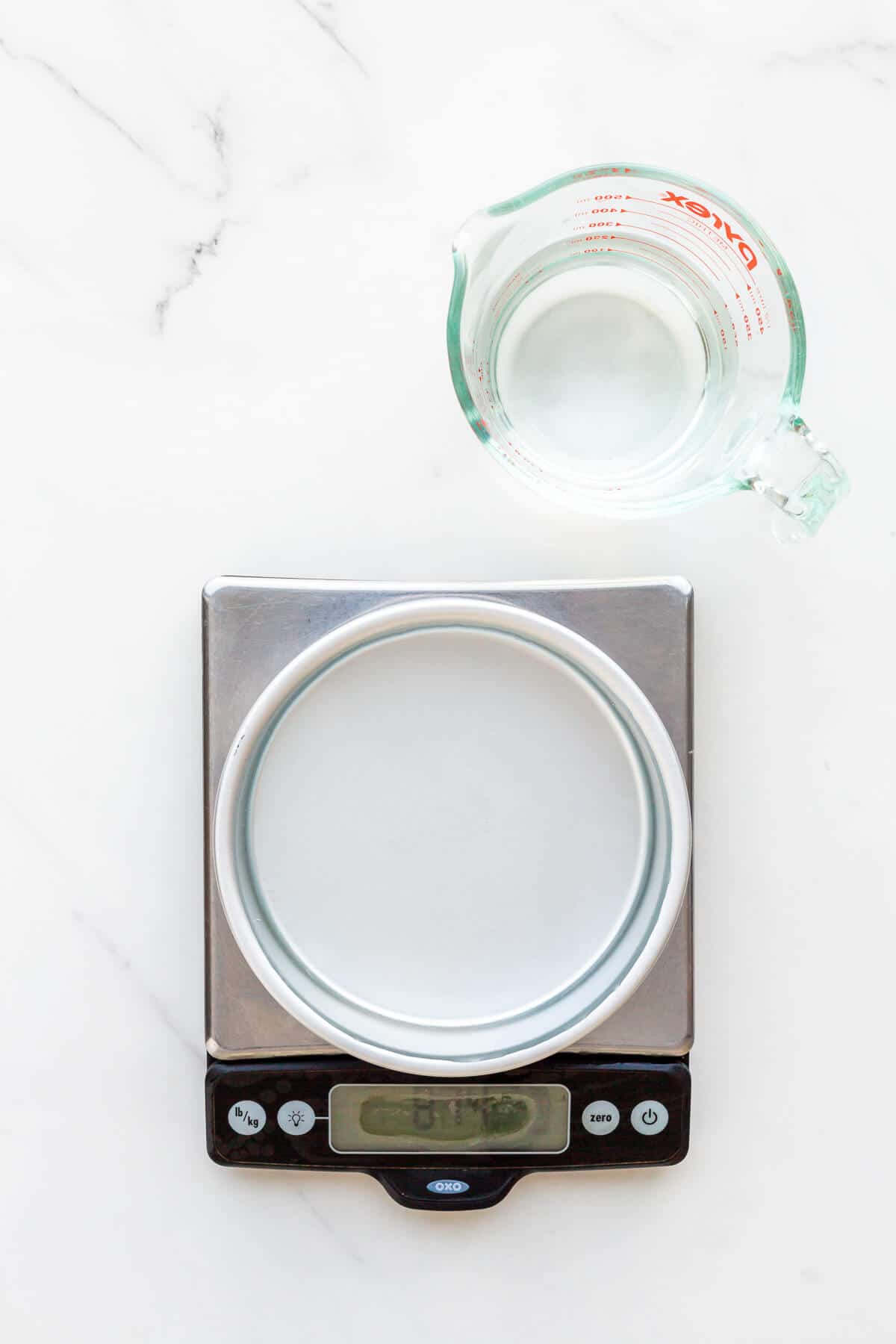
Use your kitchen scale
The easiest way for you to determine the volume of your cake pans is to use your kitchen scale! Here's how:
- Place the empty, clean pan on your kitchen scale
- Set your kitchen scale unit to grams
- Tare the scale to zero it
- Fill the pan with tap water, all the way up to the rim if you can, without spilling
- Read the weight displayed on the scale: that's the volume of your pan in millilitres!
- Remember the density of water is 1 gram per millilitre
- If you can fill your pan with 1000 grams of water, then the volume of your pan is 1000 mL or 1 L
Use a liquid measuring cup
Another easy way to determine the volume of your pans is to use a measuring cup to count the number of cups of water you can fit in the pan. The problem with this is you can quickly lose count with larger pans.
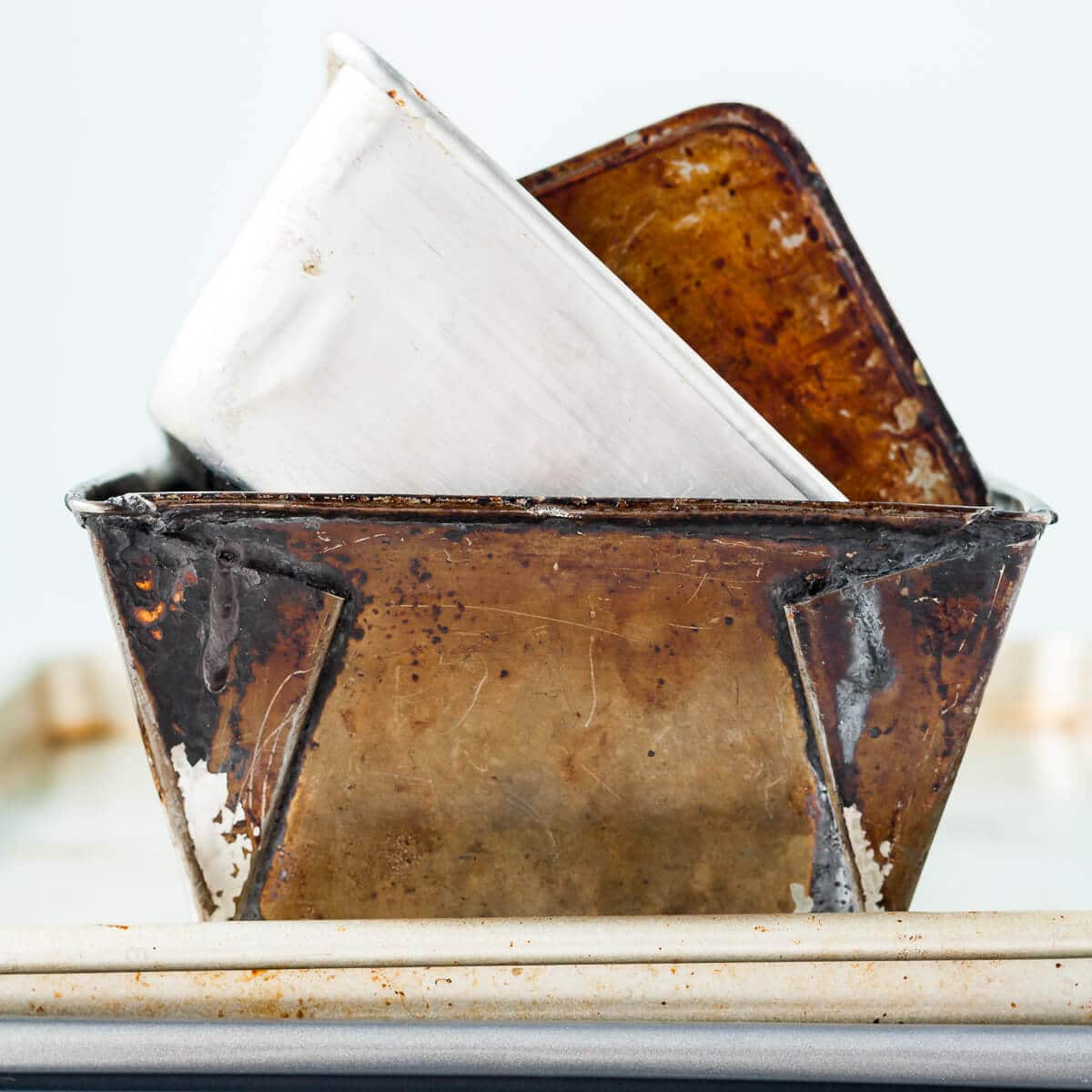
Some common baking pan sizes
If you want to convert a recipe from one pan size to another, you need to know the dimensions of the two pans and/or the volumes. To do this easily, you can use this easy-to-use baking pan conversions chart with sizes and volumes for most cake pans and bakeware, as well as conversions and equivalents.
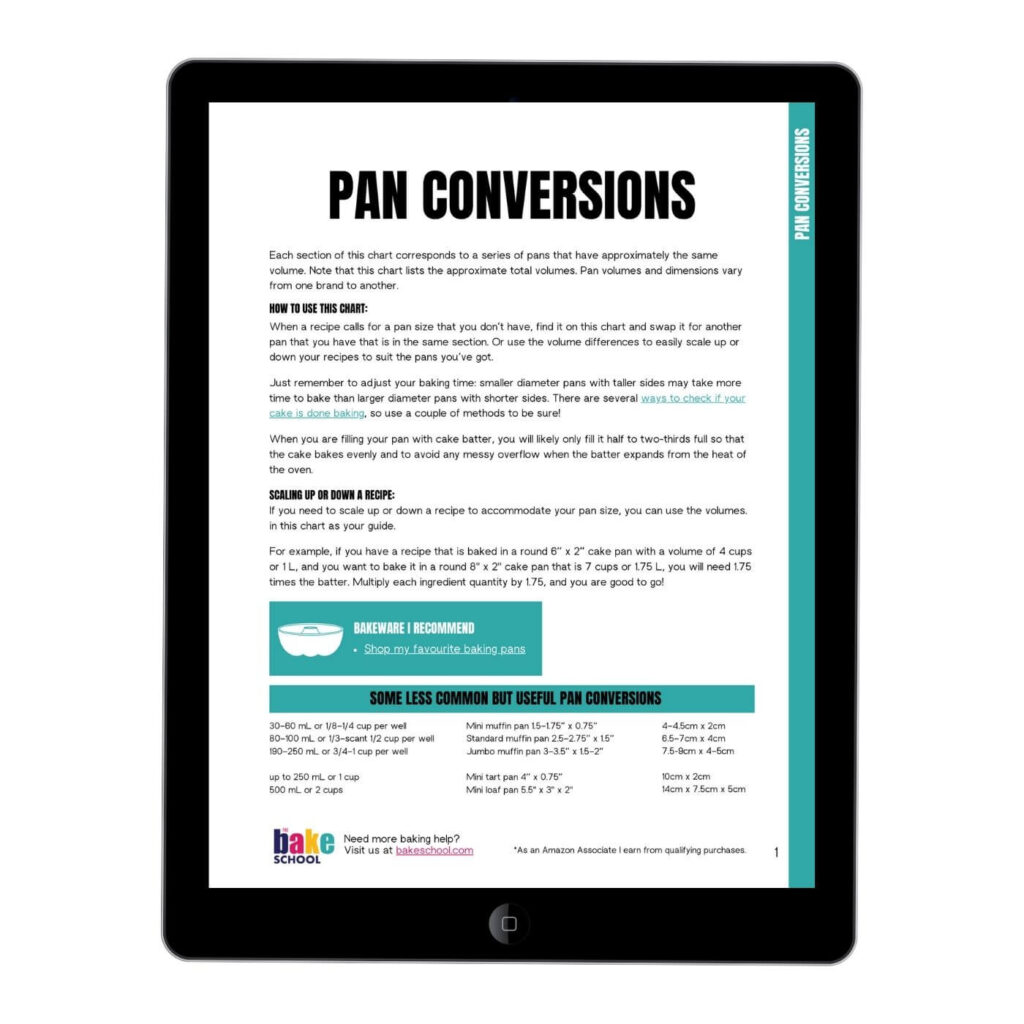
Pan conversions chart
Use this baking pan size conversion chart to help you swap cake pans in a recipe. Learn how to find out which pans are equivalent and how to convert from one cake pan size to another.
Here's a list of the cake pans and bakeware you may need:
- Square pans (like brownie pans)
- 8x8x2-in pan, also called an 8-inch square pan is 20x20x5 cm (8-cup volume)
- 9x9x2-in pan, also called a 9-inch square pan is 23x23x5 cm (10 cup volume)
- Round cake pans
- 6” x 2-in (15 cm x 5 cm) (4 cup volume)
- 8” x 1.5” (20 cm x 3.8 cm) (4 cup volume) or 8” x 2” (20 cm x 5 cm) (6 cup volume)
- 9” x 1.5” (23 cm x 3.8 cm) (6 cup volume) or 9” x 2” (23 cm x 5 cm) (8 cup volume)
- 10” x 2" (25 cm x 5 cm) (10 cup volume)
- Springform, usually 9” x 3” (23 cm x 7.6 cm) (12 cup volume)
- Rectangular bakeware
- 9x13x2-in pan is 23x33x5-cm (16 cup volume)
- Sheet pans
- Full sheet 26" x 18" x 1" (66 x 46 x 2.5 cm
- Half sheet 13” x 18” x 1” (33 x 46 x 2.5 cm)
- Quarter sheet 9” x 13” x 1” ( 23 x 46 x 2.5 cm)
- Loaf cake pans
- a standard loaf cake pan is a 9x5x3-in pan is 23x13x6-cm and is sometimes referred to as a 9x5 pan for short (8 cup volume), but sometimes 8.5” x 4.5 “ x 2.75“ (21 cm x 1 cm x 6 cm) (6 cup volume) are used
- Pie plates
- a standard pie plate has a 9-in diameter or 23 cm
- Bundt pans and tube pans
- Typical bundt pans are 10” x 3.5” (25 cm x 9 cm) if not larger (minimum 12 cup volume)
- Typical tube pans are either 9” x 3” (23 cm x 7.6 cm) or even 10” x 4” (25 cm x 10 cm) (12–16 cup volume usually)
For a complete list of pan sizes of most bakeware in inches, centimetres, cups, and litres, and for help on how to convert recipes from one pan size to another, buy this pan conversions chart!
Baking Pan Sizes and EquivalentsConverting a recipe from one pan size to another
Once you know the volume of the pan used in your baking recipe, you can then make substitutions:
- use an equivalent pan of equal volume and make no changes to your recipe, but remember that you will have to adjust baking times because taller, narrower cakes will take longer to bake than shorter, wider cakes.
- use a larger volume pan and scale up your recipe: calculate the ratio of volumes (larger pan divided by recommended pan volume) and use that factor to scale up the quantities in the recipe. The factor will be greater than one because you are scaling up your recipe. All you have to do is multiply all the ingredient quantities by that factor (the ratio).
- use a smaller volume pan and scale down your recipe: calculate the ratio of volumes (larger pan divided by recommended pan volume) and use that number to scale up the quantities in the recipe. The factor will be less than one because you are scaling down the recipe. All you have to do is multiply all the ingredient quantities by that factor.
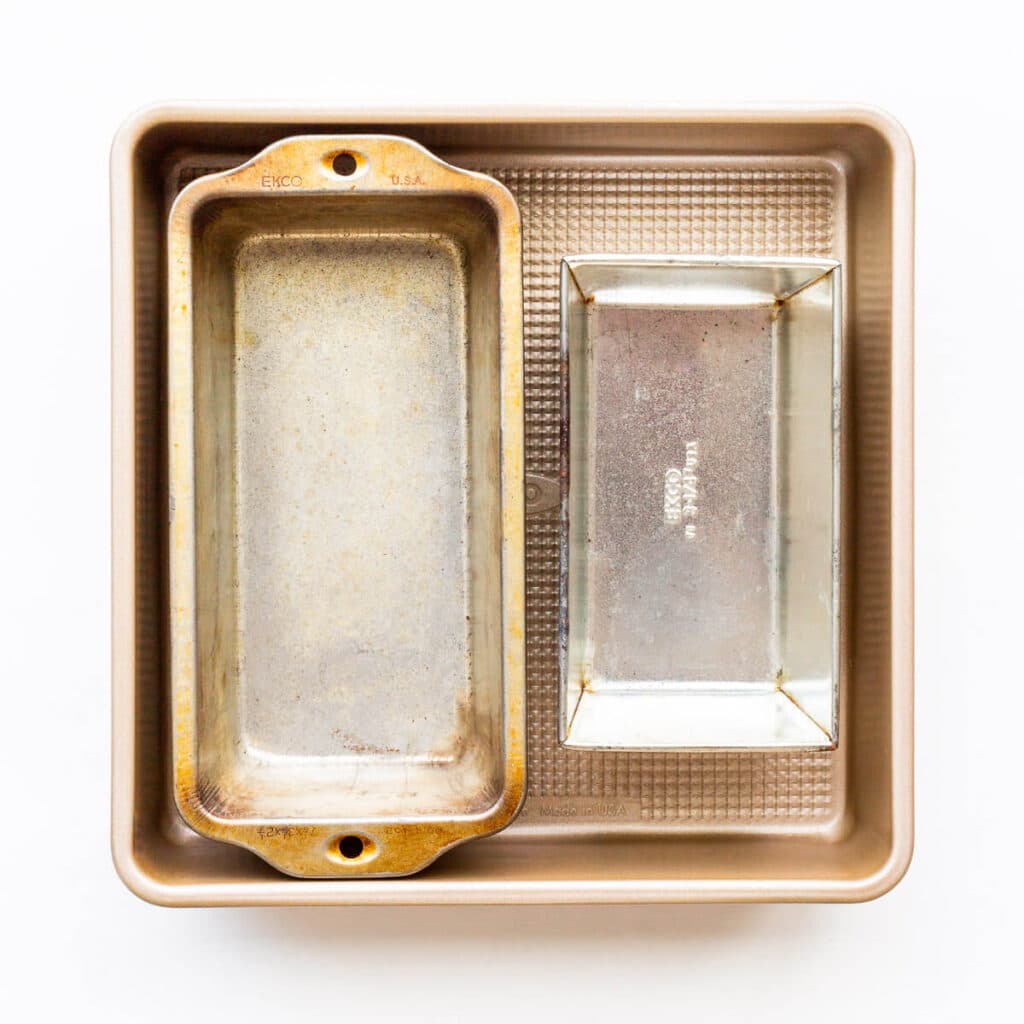
Frequently asked questions
To order a cake pan, you can generally get what you need on Amazon. Check out this list of Favourite bakeware from The Bake School.
You can bake a cake in any type of pan. Depending on the type of cake you want to make, certain pans are more appropriate than others. For example, an angel food cake is baked in a tube pan, while a layer cake is usually baked in two or three pans of the same dimensions, whether square or round. A sheet cake is usually baked in a 9x13 pan with sides that are at least 2 inches tall because the cake is frosted and served in the same pan it was baked in, so you need room for both cake and frosting. Check out this list Favourite bakeware from The Bake School.
Loaf pan dimensions represent the dimensions of the length, width, and height of the pan, usually in inches. They are often described and displayed as length x width actually, where 9 inches is the length and 5 inches is the height. These dimensions are measured from the inner edge to the inner edge. 9x5 is a fairly standard loaf pan and it may also be referred to as a 1-pound loaf, referring to the weight of the ingredients that go into a bread loaf that fits this size pan.

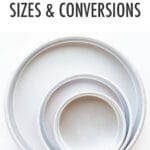
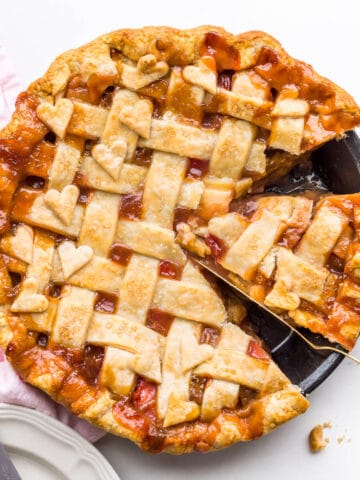
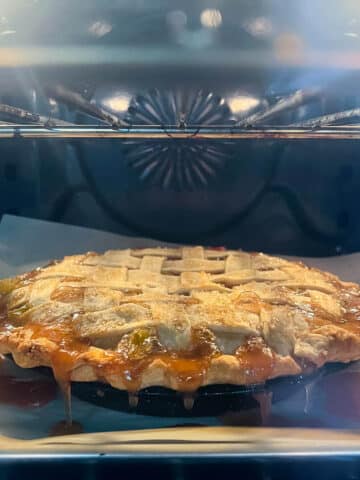
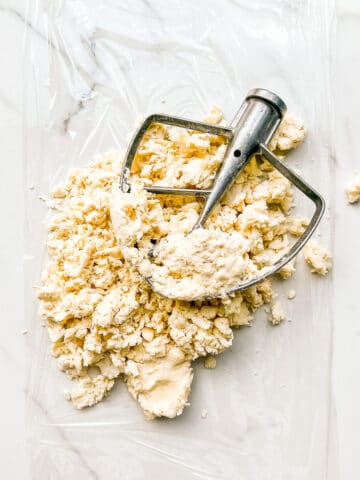
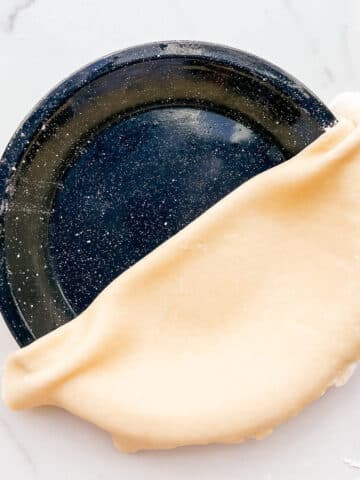
Annapurna says
Hi, Thank you so much it really helps to me.